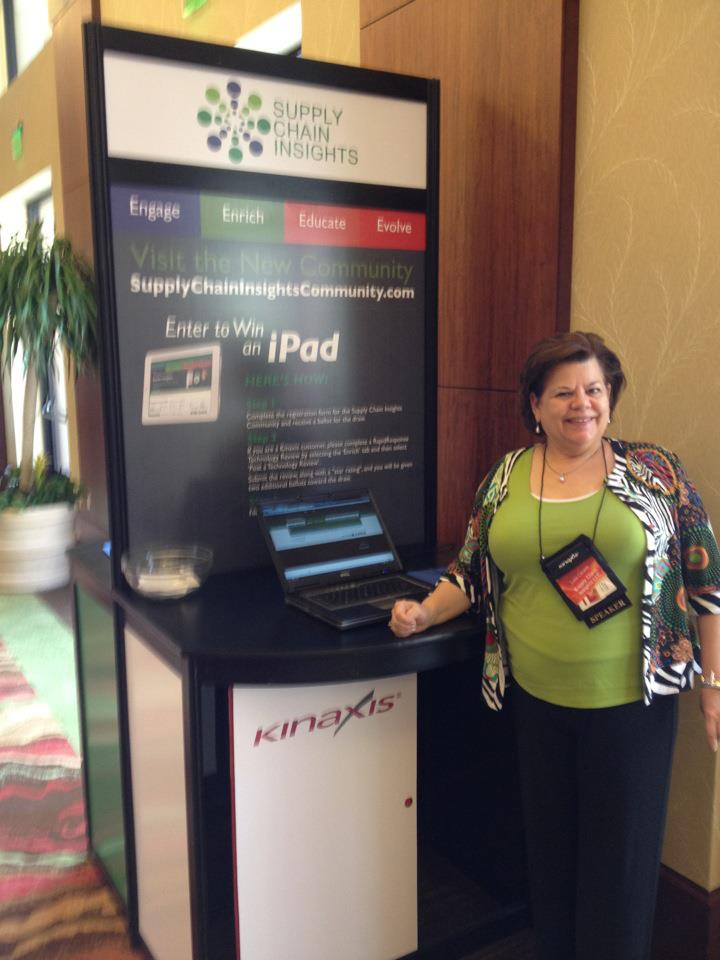Let me start with why I selected a baby with ears for this post. I find that most companies’ understanding of supply chain planning is immature, and that next week, at the Gartner Supply Chain Summit in Orlando, that many will don their Mickey ears to discuss what I consider outdated supply chain planning models. The investment in these outdated concepts is an opportunity cost to improve outcomes. Here I share how to challenge the status quo.
Reflection. What Does Not Work.
In 2012, when I started Supply Chain Insights, I believed that I could revolutionize the purchase of supply chain planning solutions by initiating a rating and review process across trading partners. I believed that business leaders sharing insights in the network directly with other business leaders in a private community would improve supply chain planning. So, I rolled my savings out of my 401K to build a community to enable business user feedback and reviews. It took twelve months to build, and it failed. The reason? I did not adequately evaluate human behavior. Business leaders see the open sharing of feedback on software as too risky. No one wants to share openly. They fear company reprisal.

Figure 1. Lora at Kinaxis conference in 2012 launching the Supply Chain Insights Community to facilitate rating and review feedback in a private community.
In the process of failure, I started some introspection. How can I improve the process of software selection? Buying supply chain planning software is hard. Technology vendors speak techno geek, and I struggle to name any consultant familiar enough with today’s market to give an objective opinion. I never believed in the Gartner Magic Quadrant process when I was an employee of Gartner. It is one of the reasons that I resigned from Gartner (not once but twice). The issue? The comparison of dissimilar companies in a four-box model is meaningless. The solutions are different. As a result, it is impossible to accomplish an accurate review in a four-box model. It will never be an apples-to-apples comparison or even a comparison of types of apples (E.G. McIntosh versus Granny Smith). Instead, it is a mushy fruit salad. As a result, I believe that it is useless.
The ratings this year are particularly problematic. Many technologies (I count six) are missing, and most of the ratings are just wrong. (Does anyone really think that the Oracle SCP solution is stronger than SAP’s? For example, those that actively read my blog, know that I frequently take issue with SAP, but seldom with Oracle. The reason? I still hold hope that SAP could get serious about supply chain planning, but I have given up on Oracle (with the exception of transportation management.))
The release of the Supply Chain Planning Magic Quadrant drives a series of self-congratulatory press releases like this one from OMP. Each is an opportunity cost, and a deterrent, for technology leaders to get serious about innovation.
So, if I cannot build an effective community or side-step the dark shadow of the Gartner Magic Quadrant, what can I do?
My Answer
This weekend, I drove thirteen hours to Paducah, KY. Windshield time is a wonderful time to catch up with friends and do research. So, I dialed five senior leaders at technology companies to ask:
- What was their opinion of the Gartner Magic Quadrant?
- How are people buying software? What problems do you see?
- What would you recommend people do when considering the purchase of software?
- What steps to take?
Most believe that Gartner would be of better service to the industry to adopt more of a Horses for Courses Strategy. The current model is a frustrating and not seen as helpful to the market.
The idiom ‘horses for courses’ derives from horse racing and symbolizes the concept of tailoring solutions to meet the individual characteristics of a situation or problem. People use the saying to actively select horses that suit a particular racing course’s specific conditions and characteristics.
For example, how do you compare Arkieva to ToolsGroup? The right answer is that you don’t, or you shouldn’t. If Kinaxis and OMP are in the same deal, the buyer is usually confused. The reason? They fit different market needs. The current process of buying and implementing focuses on bolting software into an IT architecture versus solving a business problem. If your conversation is centered on IT architecture, you probably will not be successful with a supply chain planning project.
Making a Good Business Decision
So, you might say, “OK Lora. How do you do it better?” Here is my answer.
- Get Clear on the Business Problem. Focus on first principles. Gather a group of peers in a room and analyze the business opportunity to improve order reliability. Ask the five why(s). Then build business case studies (think back to your business school case studies) describing the opportunity. Identify “what a good answer would look like.” Then socialize the work internally to the organization to get a greater understanding. Avoid superlative discussions like end-to-end planning, or digital transformation. Be very clear on the definitions, root issues, and desired outcomes. Avoid pitfalls. For example, in the chemical industry don’t forget the importance of envelopes, material balances, reverse bill of materials, grades, etc. Or in the discrete industry, the need for interoperability between design and production, the translation of quality of design to quality of conformance for platforms, bill of materials, and supplier development programs. Focus outside-in on market signals and decreasing the latency of demand consumption, and minimization of the bullwhip effect. Don’t make the mistake of assuming that the order is representative of demand. Be sure that you don’t make the mistake of thinking that sales-driven or marketing-driven is market driven. Focus outside-in on channel signals, recognize that most companies have five to seven demand streams, and then align the demand streams to supply strategies (using supply network data). Be wary. Few consultants really understand supply chain planning. (The stories that I can tell…)
- Network. Network. Network. With this understanding, go to conferences and events. Put your case studies in your briefcase. Ask other like-minded companies if they have the same problem and how they have solved it. Sidestep the industry hype cycles and sales vernacular. Draw on napkins and brainstorm on whiteboards. Avoid discussions with technology sales teams until you are clear on the problem you are trying to solve. To get there, discuss business problems with peers from other companies. The best discussions at a conference are usually informal ones. If you are an introvert, like me, force yourself to network actively.
- Analyze Cultural Fit. As you attend industry conferences, get a feel for the cultural fit for technologists and consultants. As you work on discovery, listen to your gut. Avoid PowerPoint and pretty pictures. Ask peer companies about their interactions with technologists. Analyze what is working and what is not. Avoid pretty demos and RFP processes. Don’t run a selection process through procurement or finance. Consider attending user conferences of a vendor to understand the cultural fit. Listen and learn.
- Analyze the Lifecycle of the Technology Partner for Implementation. When you engage with a technology partner, ask about the transition from ideation to implementation. Understand how your business case will translate into implementation. Avoid lists of features and focus on function. Instead, use the business case to drive the discussion and build a data-driven demonstration. As you advance in your process thinking, ask the technologists to build a demonstration using your data.
- Let the Data Speak to You. As you work with the technologists, let the data speak to you. For example, currently, I am surprised on the shifts on forecastability (many companies struggle with the shifts in the market and the decrease in forecastability). Many of my clients are degrading the forecast when Forecast Value Added (FVA) methodology is applied and only 50% of items are forecastable.
- Then, and Only Then, Talk Technology. Supply chain planning is like putting together a puzzle. The pieces have to fit together. For example, tight integration of input data to the supply chain planning model from ERP is very limiting, but improving interoperability with ERP as a system of record and improving data visualization is an imperative. Explore to understand the data sources, the cleanliness and frequency of data, and evaluate the use of machine learning and NoSQL to improve data quality and reduce data latency.
Next Steps?
So, with tongue in cheek, close your eyes and imagine business leaders and technologists gathered at The Gartner Supply Chain Forum this week in Disney proudly wearing their Mickey Mouse hats throwing copies of the Gartner Magic Quadrant along with their self-congratulatory press release into the fire while saying, “enough is enough.”
It is time to get serious about driving supply chain results.
Source: Horse for Courses definition Oxford Dictionary







